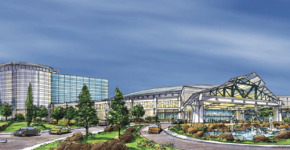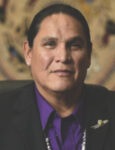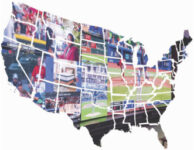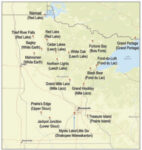
There has been much talk regarding growth in Native American country, especially since the Indian Gaming Act of 1988 moved the gaming industry to the forefront of tribal development. The expansion of commercial and tribal gaming in recent years, however, has led many to believe the gaming industry in North America has reached its saturation level, leading tribes to seek more creative and out-of–the-box economic development strategies to safeguard their communities.
Still, several questions remain:
1) What could potentially be left in Native American development for gaming on new sites?
2) How can tribes continue to earn revenues should the gaming market indeed be saturated?
3) How is the Native American community responding to these factors?
Recognition Road
To address these questions, we looked to land determinations and the federal recognition process for tribes throughout the United States. As of the writing of this article, there are officially 567 tribes that have been federally recognized in the United States. This figure includes the most recent recognition of Virginia’s Pamunkey Indian Tribe on January 28.
According to the Office of Federal Acknowledgement (OFA), “Since 1978, 356 groups have stated their intent to seek acknowledgment through the administrative process. Of this number, 269 groups have submitted only letters of intent or partially documented petitions, and are not ready for evaluation. The remaining 87 have submitted completed petitions. Of this number, the Department has resolved 55 and 19 have been resolved by Congress or through other means.”
The current OFA workload consists of three petitions under active consideration, while 11 petitions are ready and waiting for active consideration. That still leaves nearly 270 tribes that have submitted letters of intent or have petitioned to be federally recognized that have yet to move forward.
The recognition process itself is cumbersome and considered by many to be a somewhat broken process. The process is arduous, costly and can take decades to complete. This was illustrated most recently by Shinnecock Indian Nation, who petitioned in 1978 and didn’t receive recognition until 2010, 32 years and over $30 million later.
It would seem for a tribe that has existed for centuries on the coastal lands of Long Island, the process would have been easier for the Shinnecock tribe, but due to the labored process and lack of sufficient personnel to authenticate the records, the process took much longer than it should have, and at a greater cost.
For a tribe to be federally recognized, it must essentially provide proof of the following criteria:
1) They can be continuously identified as an American Indian body since 1900.
2) They existed as a distinct community and maintained political influence over their members since historical times.
3) They provided governing documents describing their governance procedures and membership criteria;
4) They provided a list of their current members who descend from a historical Indian tribe and who are not also members of another federally recognized tribe.
5) They have never been subject to congressional legislation that expressly terminated or forbade the federal relationship.
Many have identified the lack of personnel and tribal red tape as the greatest reasons for the delays, while others mention the opposition to tribal recognition by non-tribal and tribal people alike. It appears the main reason for tribal opposition is the desire to keep the pie smaller so as to maintain a larger cut of federal distributions for health care and other benefits.
This doesn’t bode well for the hundreds of tribes that can easily meet or exceed the requirements put forth by the OFA. As of September 29, 2015, there were 14 petitioners who have prepared the necessary documentation and are awaiting the chance to get their petitions processed.
Among these are three tribes with petitions in the process, including the Muscogee Nation of Florida, Piro/Manso/Tiwa Indian Tribe of the Pueblo of San Juan Guadalupe, and Fernandeno Tataviam Band of Mission Indians.
According to the OFA, “When resources become available to evaluate a new petition, OFA will begin its review of the petition on the top of this register. When OFA receives a new submission and finds that it meets the requirements for a documented petition, OFA will place the petition at the bottom of this register.” It is this process that keeps tribes waiting for decades for their chance to be recognized.
The ability for tribes to gain federal recognition remains critical for the future of tribal development. What is apparent is that once recognized, tribes will surely look into development. However, what form that development takes has begun to evolve.
The development of choice has historically been gaming, an industry in tribal country that began with bingo halls and flourished into full-scale Las Vegas-style destination resorts such as those seen at Pechanga, Foxwoods, Mohegan Sun, Sandia and Tulalip.
From 2001 to 2014, tribal gaming revenues grew by nearly 120 percent, outpacing commercial growth, which grew just over 40 percent over this period. In recent years that growth has slowed considerably, growing only 1.5 percent in 2014, following only 0.5 percent growth in 2013—despite the opening of 34 casinos over that two-year period.
That being said, the nation’s 459 tribal casinos in 28 states produced record high gaming revenues of $28.5 billion in 2014, marking its fifth year of consecutive growth. This is also partly due to gaming expansion in not only new facilities, but also within existing facilities. While gaming revenues may not be growing at the same high rates that many tribes have become accustomed to, many believe that there is still potential for growth.
Tribes Helping Tribes
The newly recognized Cowlitz Indian Tribe has in mind to develop its new casino resort on 152 acres of tribal land along Interstate 5, approximately 20 miles north of Vancouver, in the heart of southwest Washington. The new facility is expected to include 368,000 total square feet, including a 100,000-square-foot gaming floor, multiple restaurants and meeting facilities. Phase I of the project, which is scheduled to open in spring 2017, is being developed in collaboration with Salishan-Mohegan LLC.
Over the past several decades, gaming has been the primary industry that tribes have looked to for economic stimulus, and while this trend will likely continue, the threat of saturation is real. Therefore, instead of limiting themselves to gaming developments, savvy tribal leaders are looking for alternative means to diversify their tribal businesses. In fact, the joint venture between the Cowlitz Indian Tribe and Salishan-Mohegan LLC is becoming more common as tribes look to each other for collaboration and best practices.
Examples of companies and partnerships leading these efforts include the Laguna Development Corporation (Pueblo of Laguna), Potawatomi Business Development Corporation (Prairie Band Potawatomi Nation) and Four Fires—an economic partnership of the San Manuel Band of Mission Indians, the Forest County Potawatomi Community of Wisconsin, the Oneida Tribe of Indians of Wisconsin and the Viejas Band of Kumeyaay Indians of California.
The focus of these economic development strategies remains on tribal welfare, health care, education, wellness and culture. Self-reliance is also key to the foundations of economic diversification.
Former Laguna Governor Richard Luarkie shared their tribal vision while he held office, quoting, “As a tribe, in order to be successful economically, we cannot have a dependency or entitlement mindset. We have to have a mindset of innovation, of inspiration, of motivation, and dedication to the challenge that lies ahead. We must demonstrate the ability to work together for the benefit of the greater whole, and we have to be able to find economic opportunities that will create a return for the tribe, and for anyone with whom we chose to partner.”
Luarkie explained that Laguna’s business model is one that allows for a unique separation between tribal government and business. The tribe owns the economic enterprises as shareholders, and has structured them as Section 17 Federal Corporations, delegating power to the board of directors to run the business, make key business decisions, develop strategy and manage financial performance. This also puts the impetus on the businesses to create jobs for tribal members, thereby fostering growth and prosperity from within the tribe.
Tribal Blueprint
In a new publication called Defining the Next Era in Tribal Economic Development: The Diversification Imperative for Tribal Economic Development, expected this year, the Blue Stone Group and NIGA provide a virtual playbook revealing real examples of economic diversification throughout Indian Country to help guide tribes moving forward.
Some of the examples include expanding into new markets with existing capabilities or into new capabilities in the same market—for example, extending resort management and hospitality skill sets into elective health care services, making investments off reservation in similar businesses to current enterprise, or taking existing knowledge around project financing and cash management and starting a banking or credit union enterprise.
There are several examples of these practices in Indian Country. For example, the Four Fires collaboration developed the first tribally owned enterprise in Washington, D.C., with the opening of the 13-story, 233-suite Residence Inn by Marriott in 2005. San Manuel has developed the San Manuel Village, a 12-acre mixed-use development project located in the city of Highland, California, that includes a110-room Hampton Inn & Suites and conference center, restaurants, retail space and offices.
What makes tribal development so unique is also what makes each tribe unique—each tribe will have its own set of values, needs, concerns, issues and challenges, as well as its own plans moving forward. To illustrate, one way the tribes have been able to diversify is through government contracting. For the Laguna Pueblo, this occurred out of necessity. Back in the mid 1980s, in order to combat the shock of the Anaconda Uranium Mine’s closing and the resulting economic impact on the community, the Pueblo of Laguna launched Laguna Industries, a strategic move that quickly evolved to become one of the largest Native American defense contractors in the United States.
Energy Alternatives
Another effective industry has been renewable energy, which fits into Indian Country organically as tribes seek self-sustainable practices and have an innate passion for protecting the environment. The benefits to Indian Country are myriad, including long-term stabilization of energy costs, economic development, revenue generation opportunity, opportunity to conserve and sustain natural resources, energy self-sufficiency and strengthened tribal energy infrastructure.
The Cabazon Band of Mission Indians led the pack in 1990 when they allocated a 590-acre portion of their reservation near Mecca, California, for a Resource Recovery Park. The facility accepts a wide range of waste materials from wood waste to electricity, tires and even soil. The plant converts the waste into reusable materials and contributes to the income of the tribe. The tribe continues to work on innovation in renewable energy to develop a model that other tribes throughout Indian Country can replicate and implement on their reservations.
Other forms of renewable energy include concentrated solar power (CSP), wind turbines, geothermal and hydropower to power reservation lands, bio fuel development and other biomass projects. Several tribes, such as Nez Perce, Lake Traverse (Sisseton), Yakima, Coeur d’Alene, and Menominee, are the top five tribal lands with biomass capacity and generation potential. The top five tribes with CSP capacity and generation potential include the Navajo, Tohono O’odham, Hopi, Pine Ridge, Uintah and Ouray tribes.
The top five tribal lands with geothermal capacity and generation potential include the Navajo, Tohono O’odham, Warm Springs, Pyramid Lake and Walker River tribes. According to the Renewable Energy Resource Technical Potential on Tribal Lands publication, there are 196 distinct tribal lands with technical potential to support this type of energy. The top five tribal lands with wind capacity and generation potential include the Cheyenne River, Standing Rock, Fort Peck, Pine Ridge and Rosebud tribes.
The key point going forward is to understand the countless opportunities that are out there for tribal diversification, what fits best with the tribe’s values and vision, and the willingness to choose that path.













